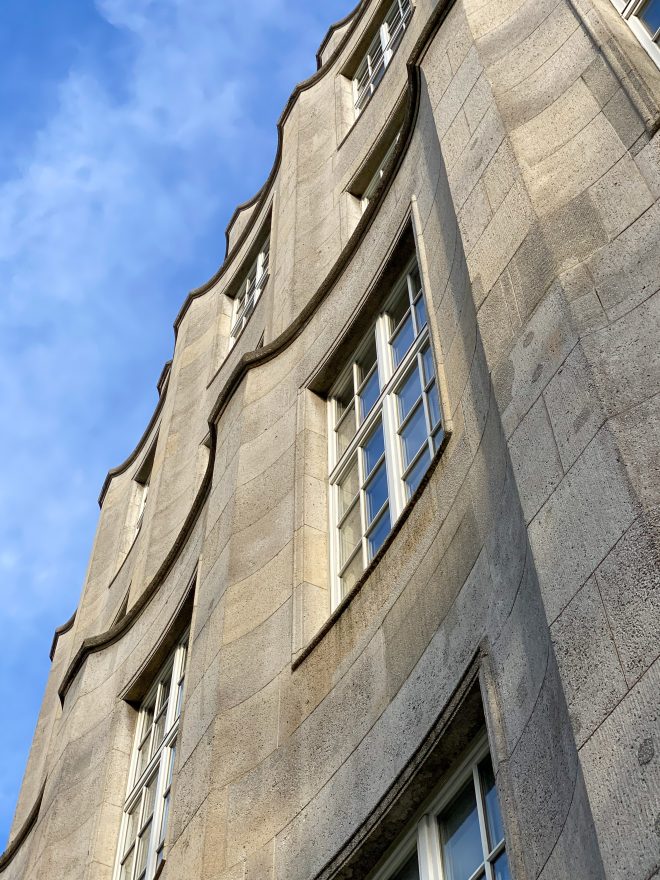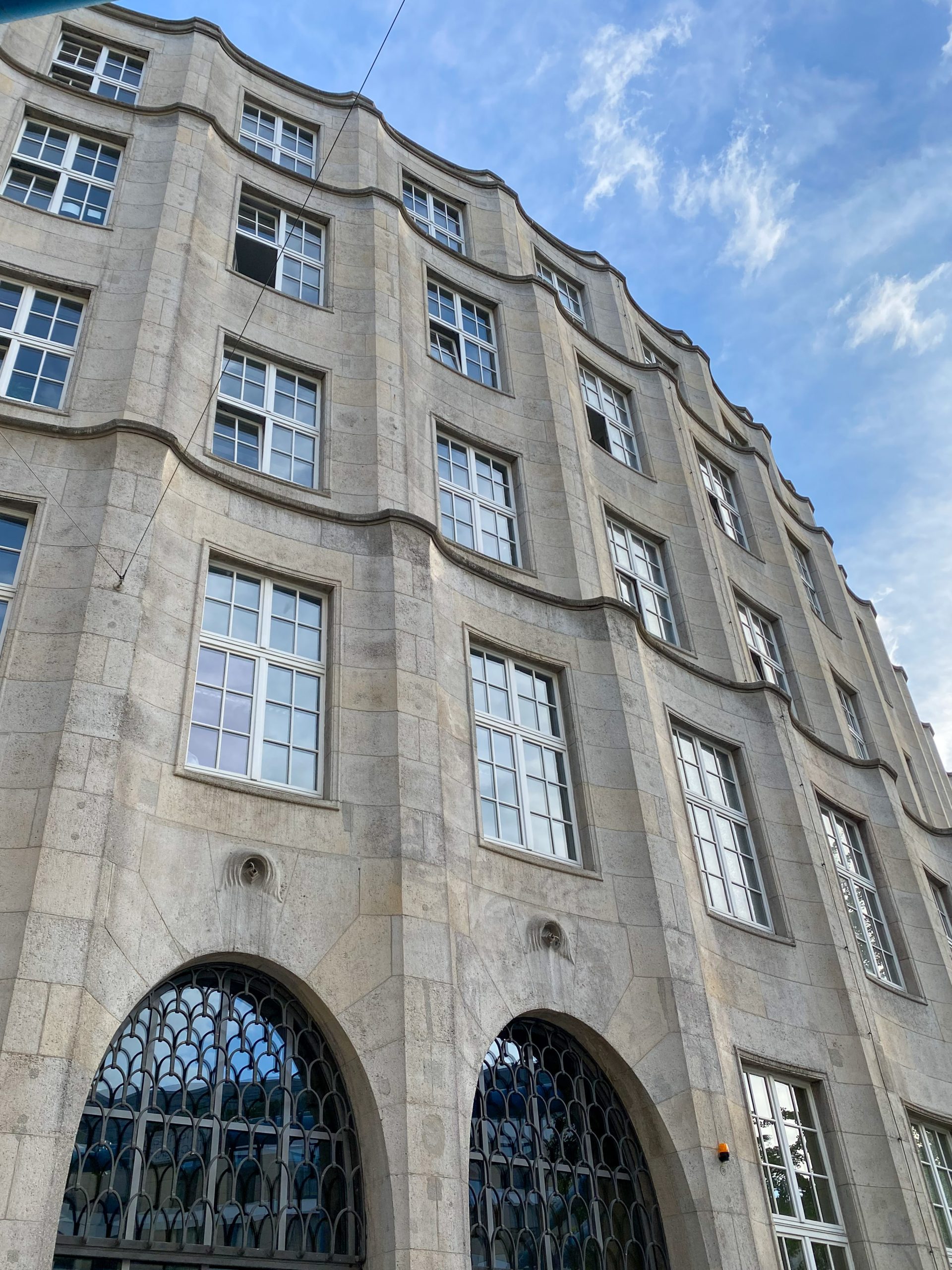
Stadthaus, 1922-1923. Architect: Ludwig Wirth. Photo: Daniela Christmann
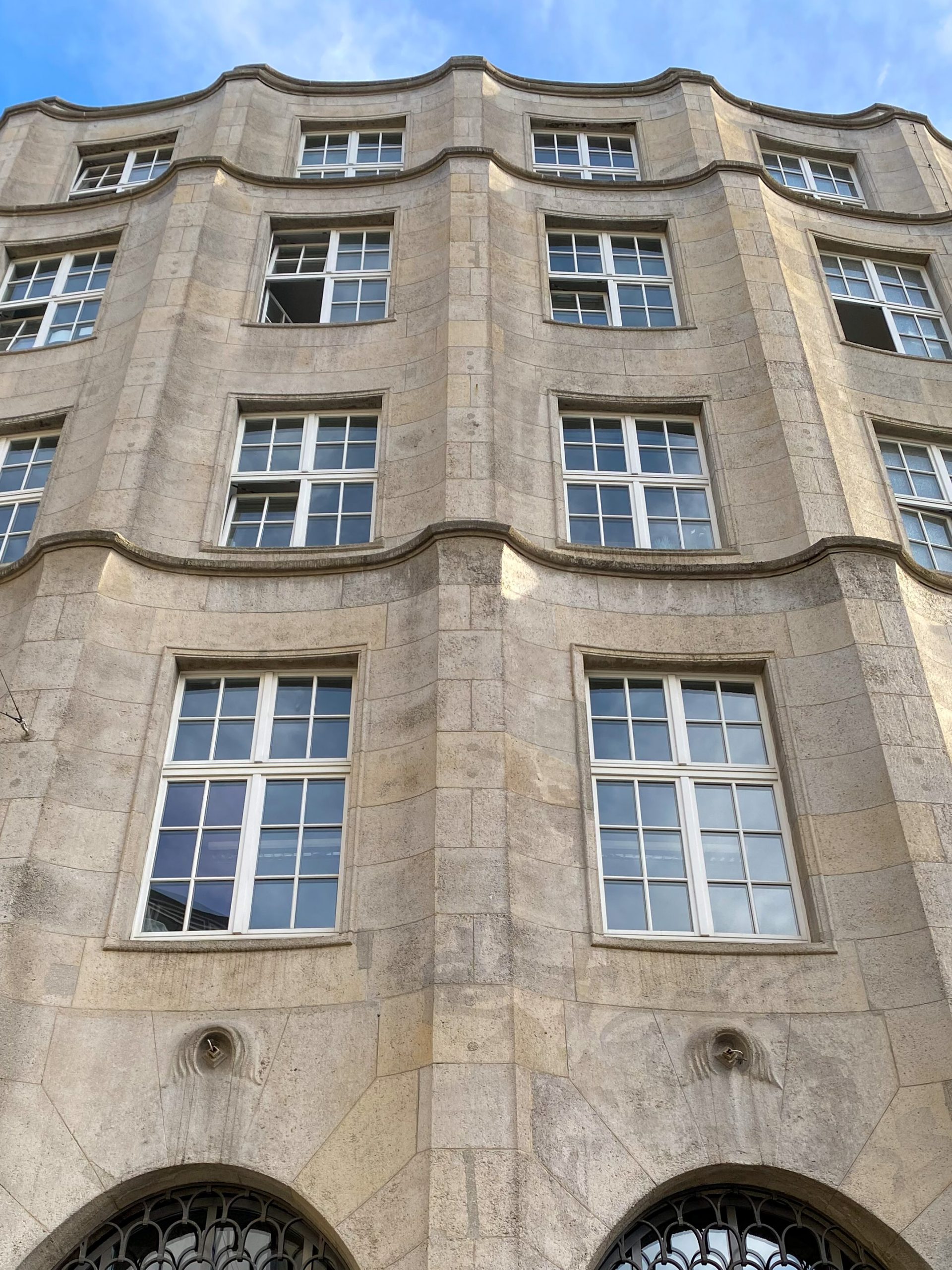
Stadthaus, 1922-1923. Architect: Ludwig Wirth. Photo: Daniela Christmann
1922 – 1923
Architect: Ludwig Wirth
Theaterstrasse 11-15, Dresden, Germany
The six-story administration building was completed between 1922 and 1923 in downtown Dresden as a curved single-wing structure with a distinctive undulating façade according to designs by architect Ludwig Wirth.
The reinforced concrete skeleton building with a cladding of cast stone is largely original on the outside and inside.
Wirth’s design was influenced by the formal language of Hans Poelzig (Dresden’s city architect from 1916 to 1920), who had already submitted plans for a town house for Dresden in 1917, which, however, did not come to fruition.
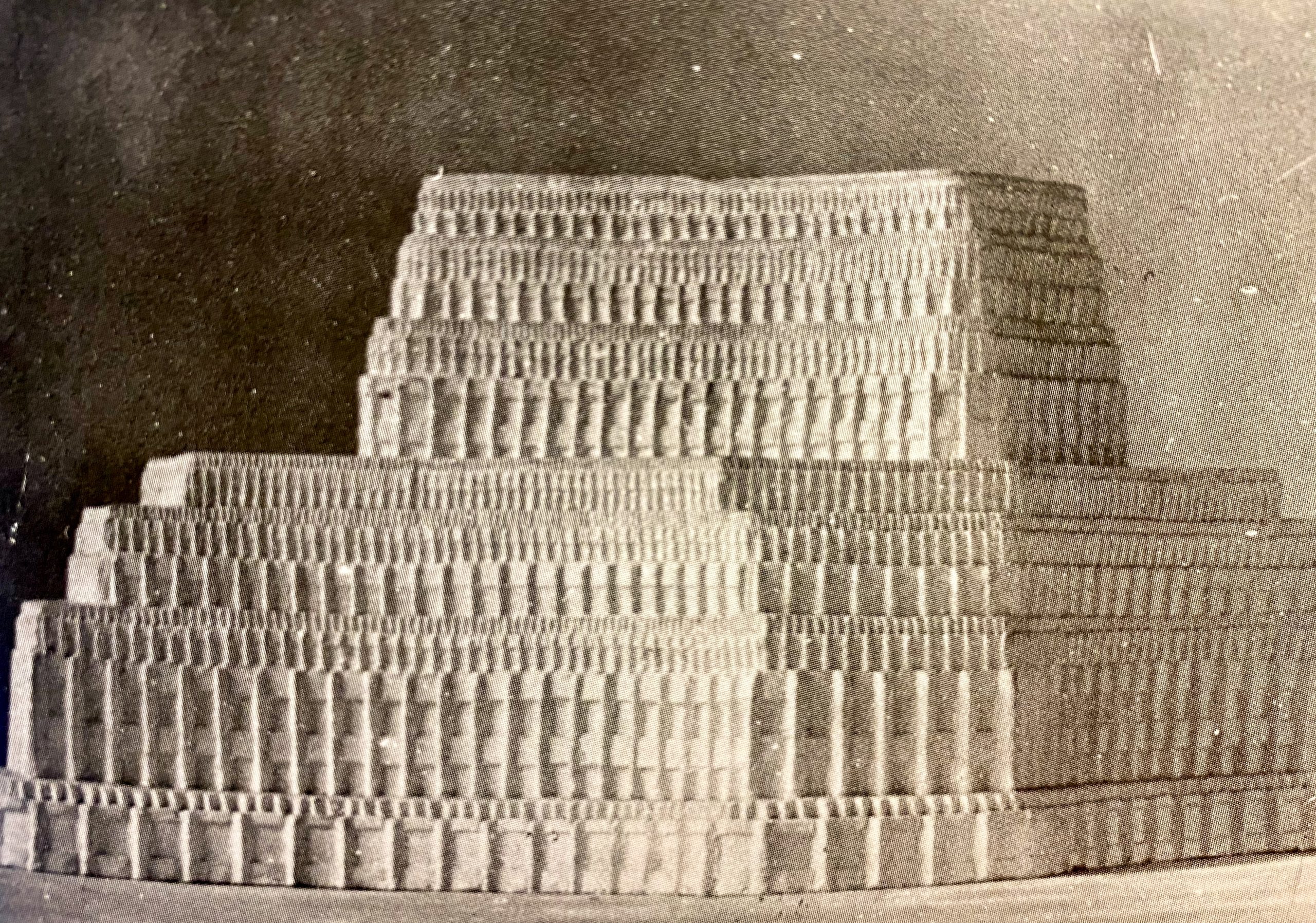
Design Stadthaus. Photo of the model, 1917. Architect: Hans Poelzig
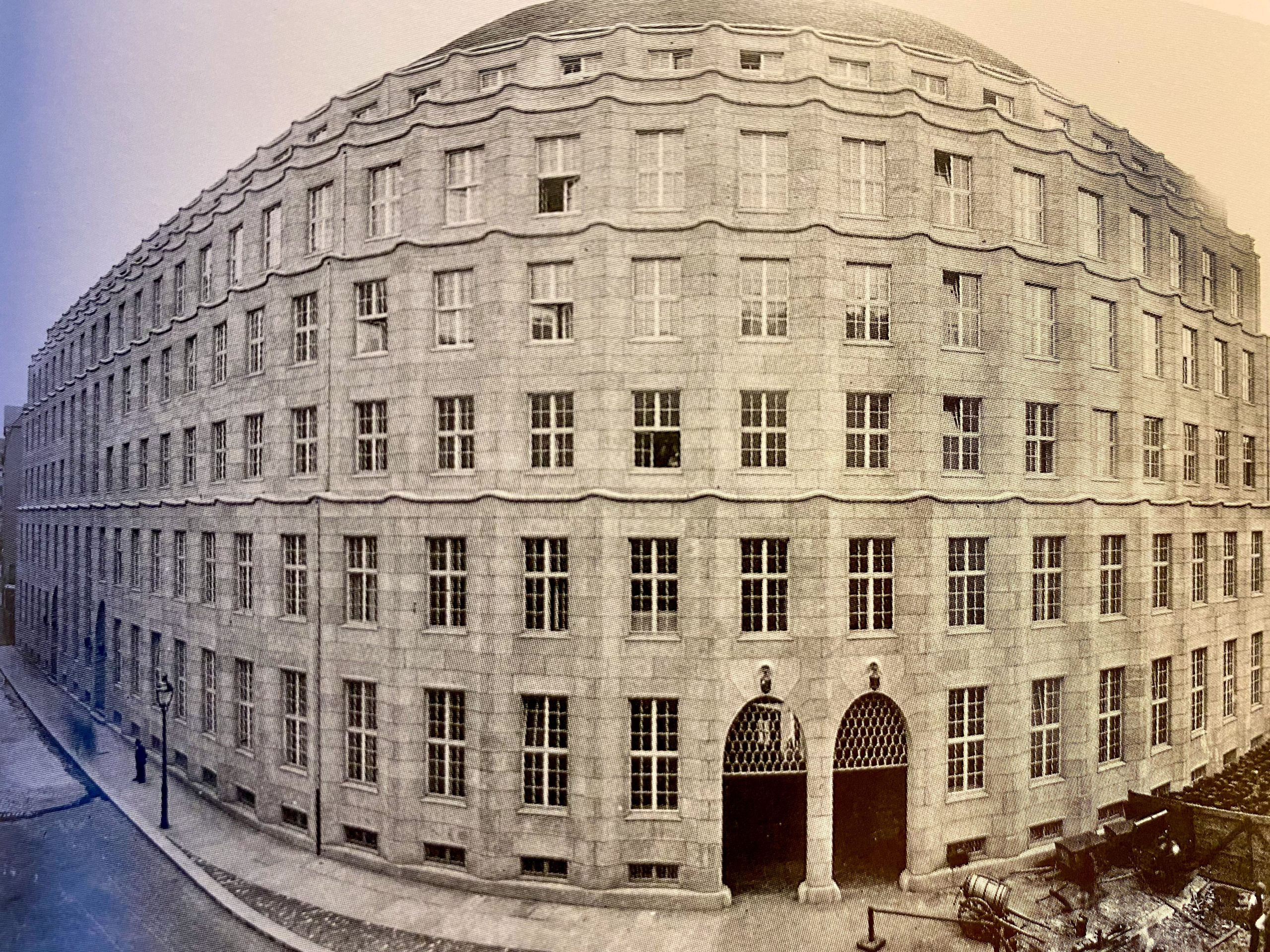
Stadthaus, 1922-1923. Architect: Ludwig Wirth. Photograph 1923
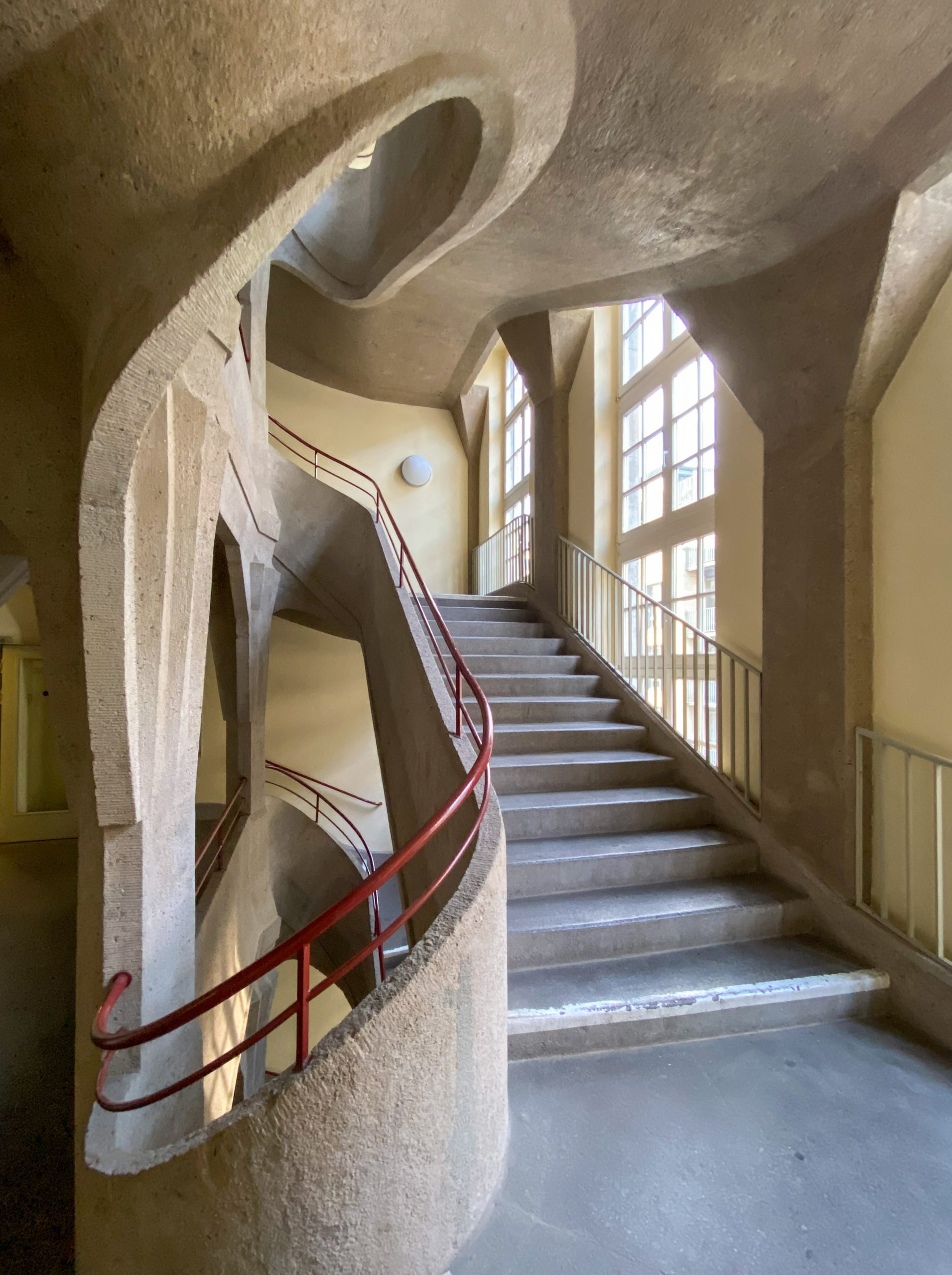
Stadthaus, 1922-1923. Architect: Ludwig Wirth. Photo: Daniela Christmann
Site of the Stadthaus
The building is located in the Wilsdruffer Vorstadt in the immediate vicinity of the Postplatz.
The main facade faces north in the direction of Zwingerteich along Hertha-Lindner- and Theaterstraße. On the diagonally opposite side of the street is the Schauspielhaus.
Stadthaus
Wirth was for many years a collaborator of Hans Erlwein, head of the municipal planning and building control office from 1905 to 1914, whose examination of Dresden’s building tradition he countered with a conception all his own.
Erlwein had already succeeded in integrating massive reinforced concrete buildings such as the Erlweinspeicher into downtown Dresden in 1913 and 1924.
With its wave-like design, the profiled ashlar facade of the Stadthaus creates lively light and shadow effects.
Its expressionist staircase is designed entirely in molded concrete.
Following the curvature of the street, the main façade of the six-story building is designed in a vertical pattern. Further vertical articulation is achieved by undulating arches interrupted by mullioned windows.
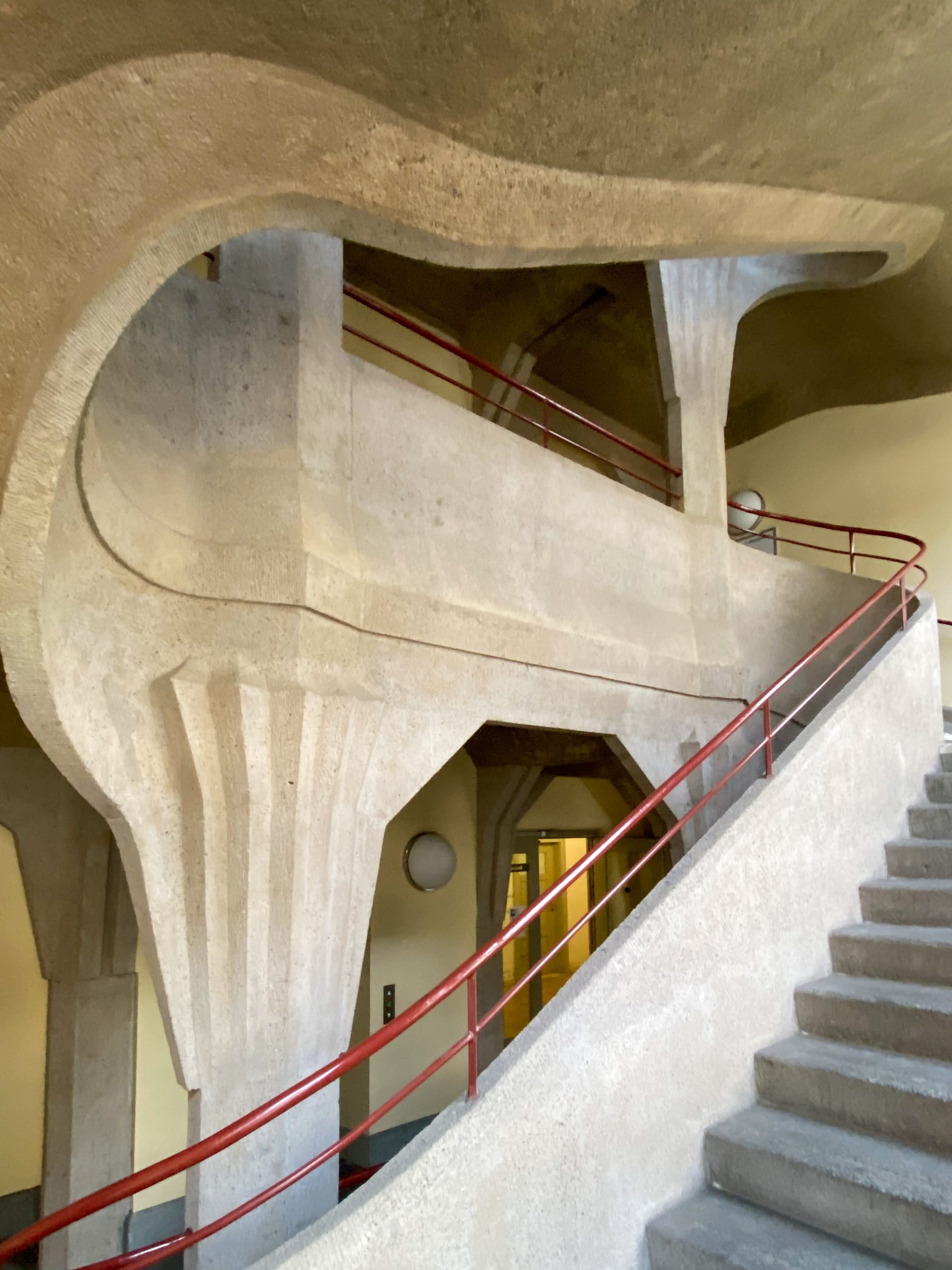
Stadthaus, 1922-1923. Architect: Ludwig Wirth. Photo: Daniela Christmann
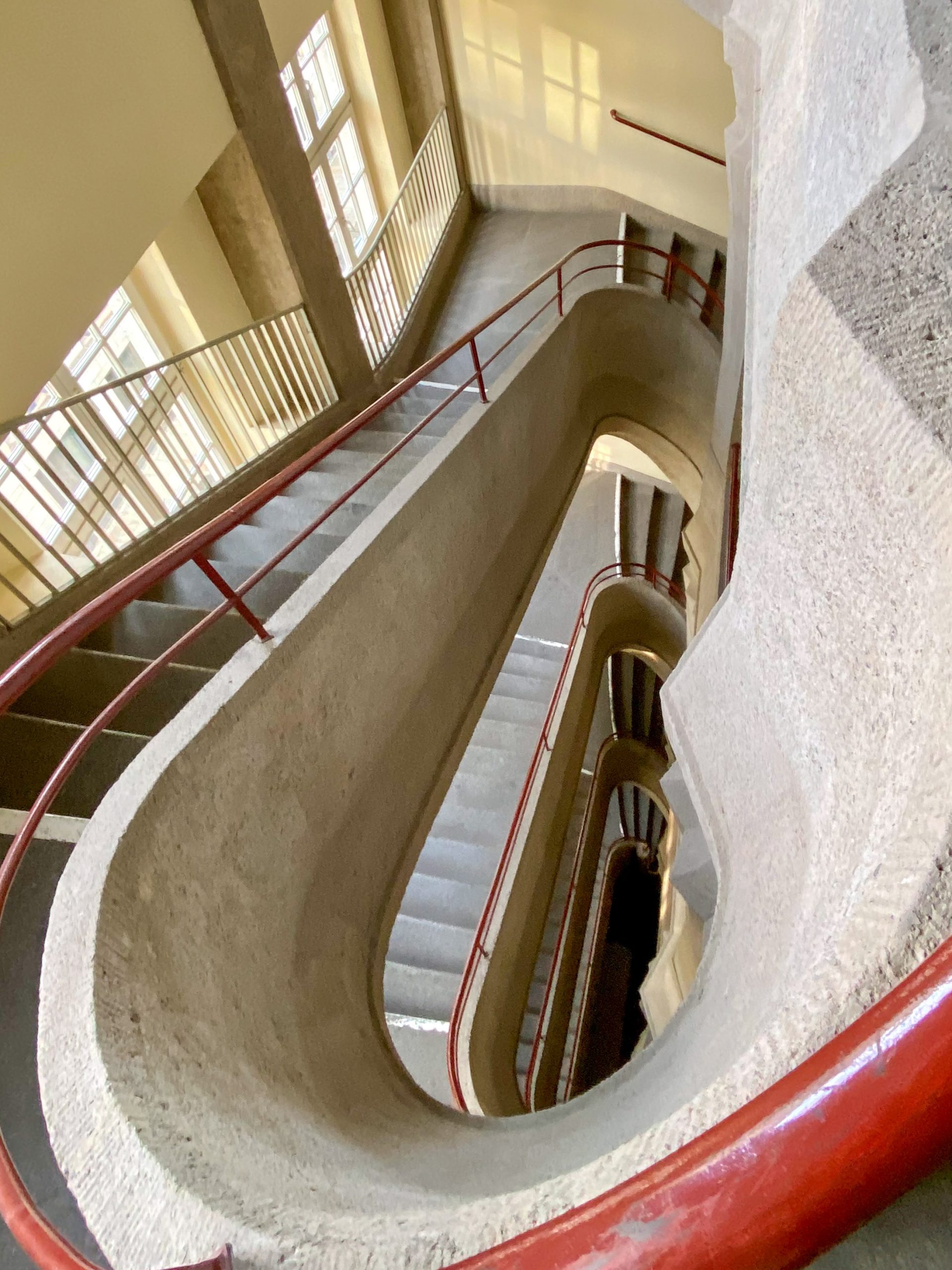
Stadthaus, 1922-1923. Architect: Ludwig Wirth. Photo: Daniela Christmann
Architect Ludwig Wirth
Born in Regensburg on February 14, 1879, Ludwig Wirth enrolled at the Technical University of Munich and, after completing his studies in architecture, obtained employment as a government builder in the Amberg and Regensburg land offices.
At an unspecified time he met architect Hans Jakob Erlwein, who became his mentor.
Dresden
Erlwein, also a graduate of the Technical University of Munich, was appointed city architect of Dresden in November 1904 and head of the structural engineering office a year later.
The date of Ludwig Wirth’s arrival in Dresden is unknown.
It is possible that he was already working there at the time of the first International Hygiene Exhibition in 1911, for which he wrote a 25-page essay on ideal family housing that was published in 1914.
In 1913 he took part in a competition for the construction of a chamber of commerce in Dresden-Plauen. From 1913 to 1914, Wirth assisted Erlwein with designs for the exhibition Das Deutsche Handwerk, which was held in Dresden in 1915.
Wirth designed the German pavilion at the Esposizione Internazionale di Marina, Igiene Marinara e Mostra Coloniale in Genoa in May 1914. He was called up in August 1914.
When Wirth returned to the Dresden structural engineering office at the end of the war, Hans Poelzig held the post of city architect.
Kleinwohnungen
In 1919, Wirth published Kleinwohnungen (Small Apartments), an elaboration of his 1911 essay, in response to the wartime housing shortage.
The book considers both multi-story apartment buildings and single-family row houses, with an emphasis on health considerations such as light, ventilation, and the provision of baths.
On the title page, Wirth is referred to as Stadtbauamtmann, department head in the design studio of the city’s structural engineering department.
Stadthaus Project
At this point, Wirth had already begun work on the Stadthaus project on Theaterstrasse, a new administrative building for the city of Dresden that would house a municipal library and reading hall.
It was the first monumental building to be erected in Dresden after the war. The design of the town house was significantly influenced by Poelzig‘s design from 1917, which was not realized.
In a review of his project in the Zentralblatt der Bauverwaltung of June 24, 1922, Wirth is referred to as the city building director.
Two designs by Wirth for a student center for the Dresden Technical University date from the same period.
On July 1, 1922, Paul Wolf was appointed city building inspector for structural engineering and urban renewal.
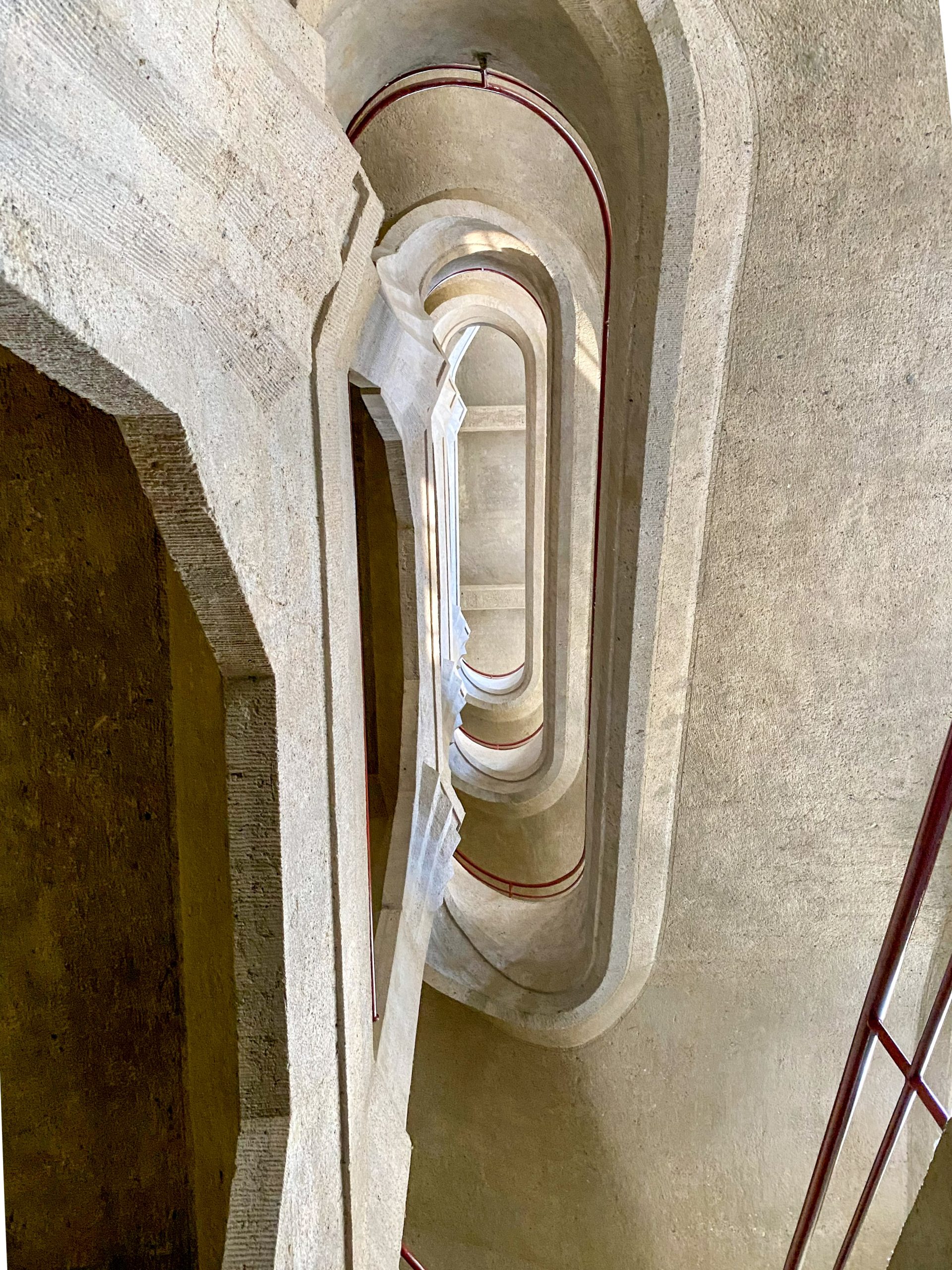
Stadthaus, 1922-1923. Architect: Ludwig Wirth. Photo: Daniela Christmann
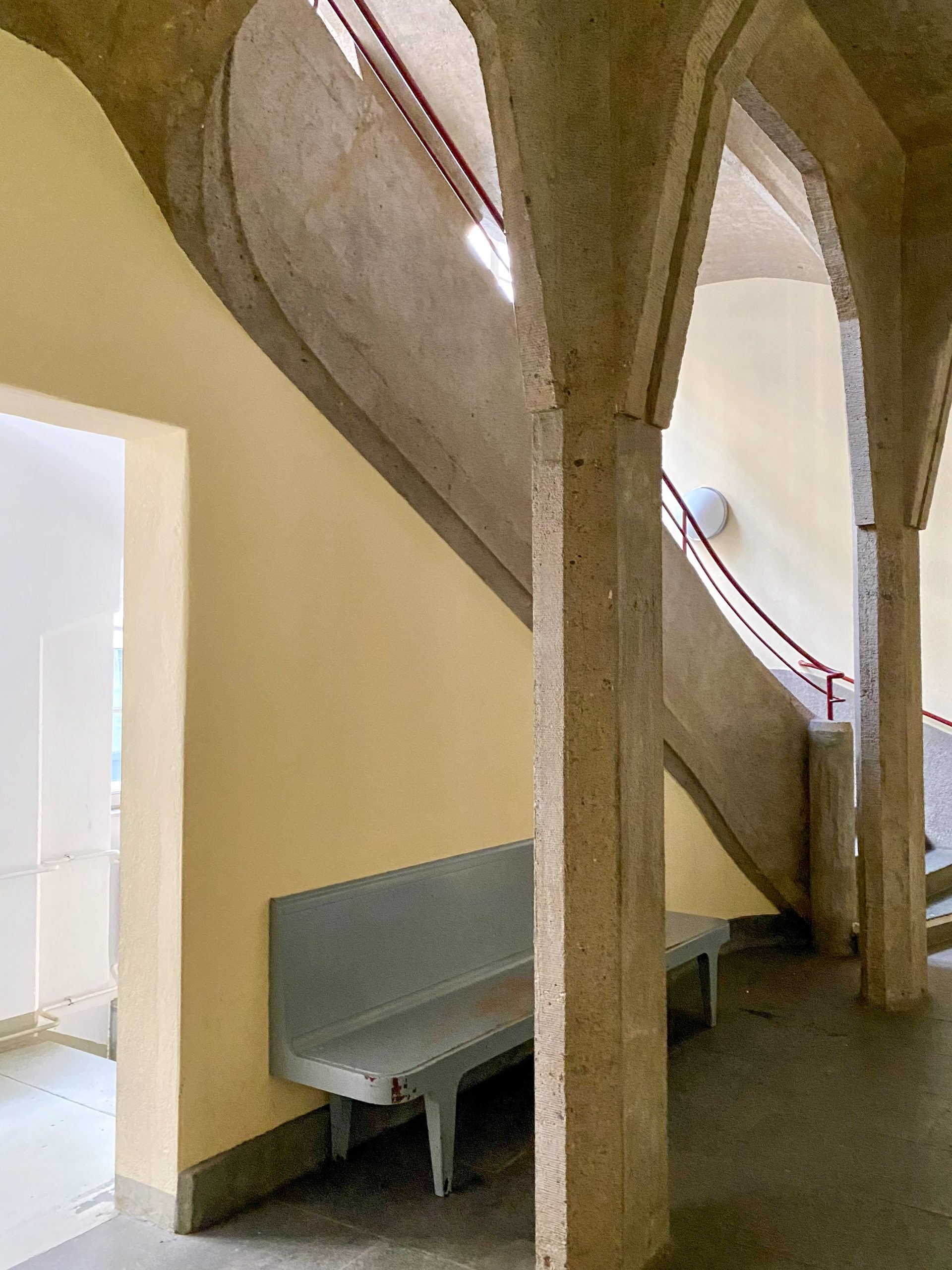
Stadthaus, 1922-1923. Architect: Ludwig Wirth. Photo: Daniela Christmann
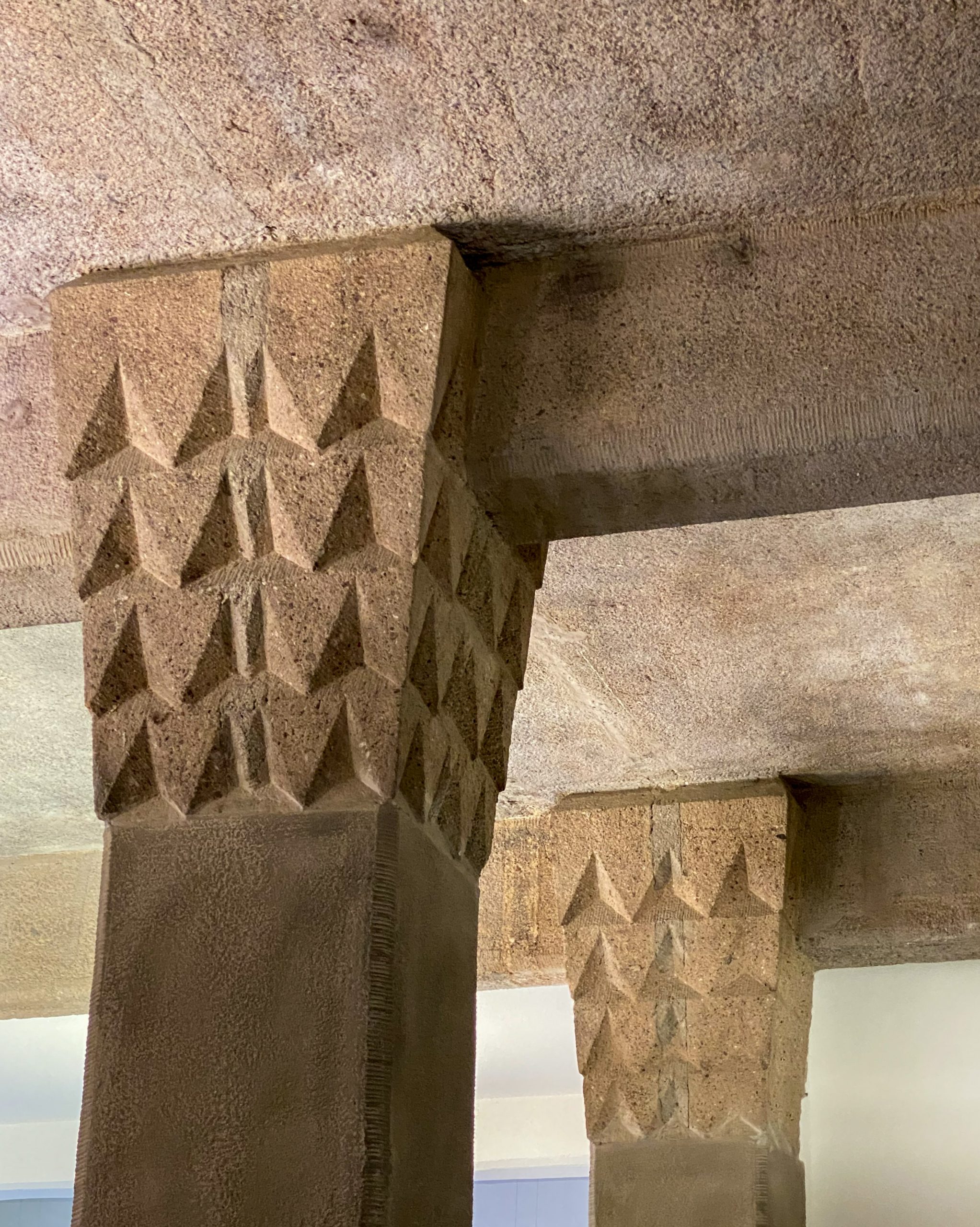
Stadthaus, 1922-1923. Architect: Ludwig Wirth. Photo: Daniela Christmann
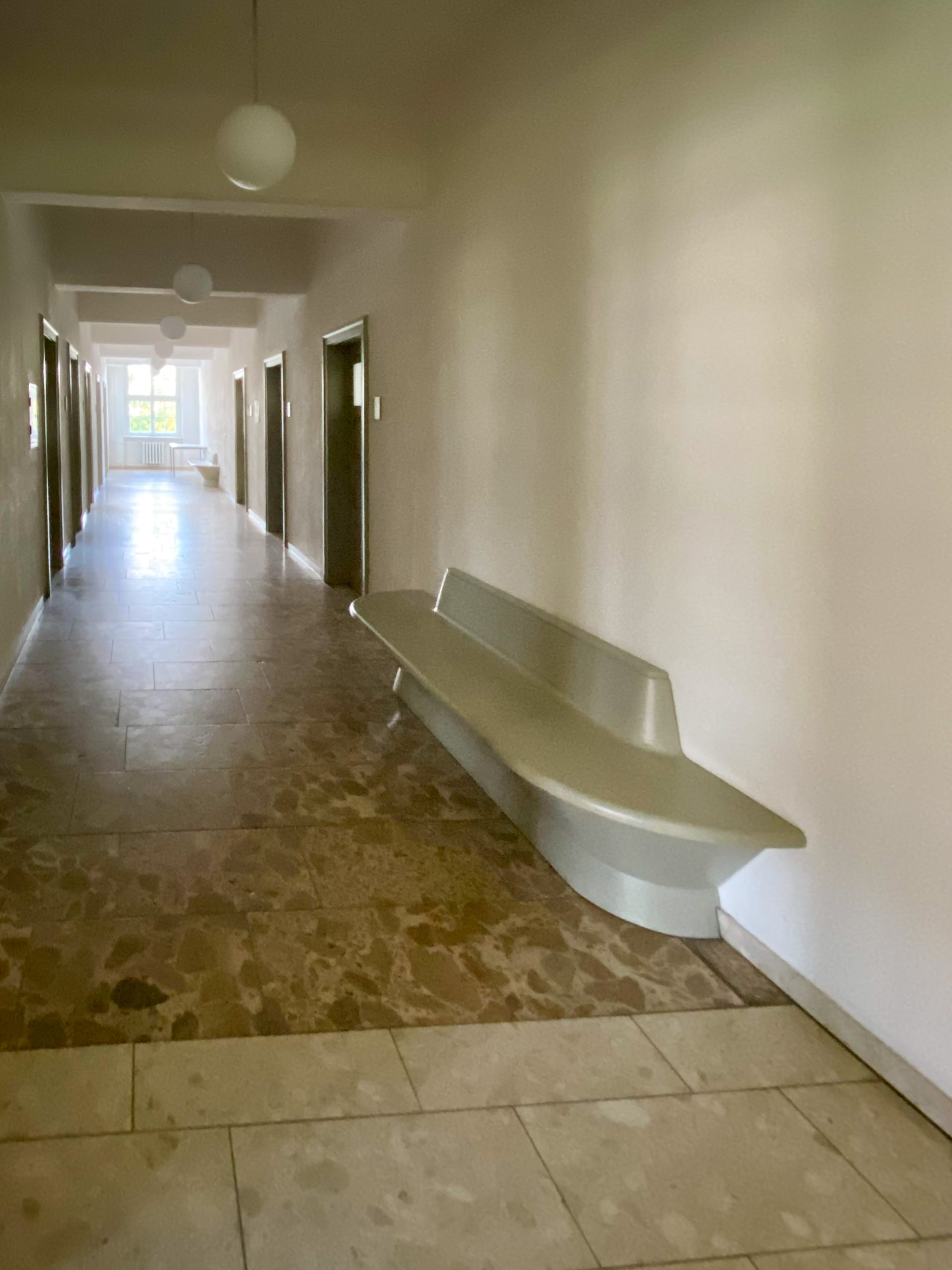
Stadthaus, 1922-1923. Architect: Ludwig Wirth. Photo: Daniela Christmann
Independent Architectural Office in Dresden
In 1925 he left the Hochbauamt and founded his own office for architecture and interior design in Dresden. Employees of his office were architect Johannes Rascher (born 1904) and Reinhold Mittmann.
Over the next few years, based on Wirth’s designs, a slide, a shopping hall and a dance hall were completed for the Fourth Annual Exhibition of German Labor in Dresden in 1925, and a community center with a festival hall was built for the Zions church congregation between 1926 and 1927.
In addition, a large motor vehicle hall in Dresden-Löbtau (1928), the “Hedrig-Greß-Heim” retirement home at Bautzner Landstrasse 108 in Dresden (1929), a community center with festival hall for the Andreas church congregation in Dresden (1930), and a post office in Glashütte were realized according to his designs.
Garmisch-Partenkirchen
Around 1935 Wirth returned to Bavaria and established an office in Garmisch-Partenkirchen. Two projects from this period can be traced: a residential building for Karl Eberth at Graf-Dürckheim-Strasse 10 in Steingaden and a country house in Garmisch-Partenkirchen built for Wilhelm List.
On August 18, 1946, Ludwig Wirth passed away in Garmisch-Partenkirchen.
Reconstruction and Renovation of the Stadthaus
Following the war, during which the Stadthaus was hit by bombs several times, it was reconstructed and allowed to be used for municipal facilities in the city center.
From 1999 to 2000, the building was extensively renovated in accordance with the preservation order.
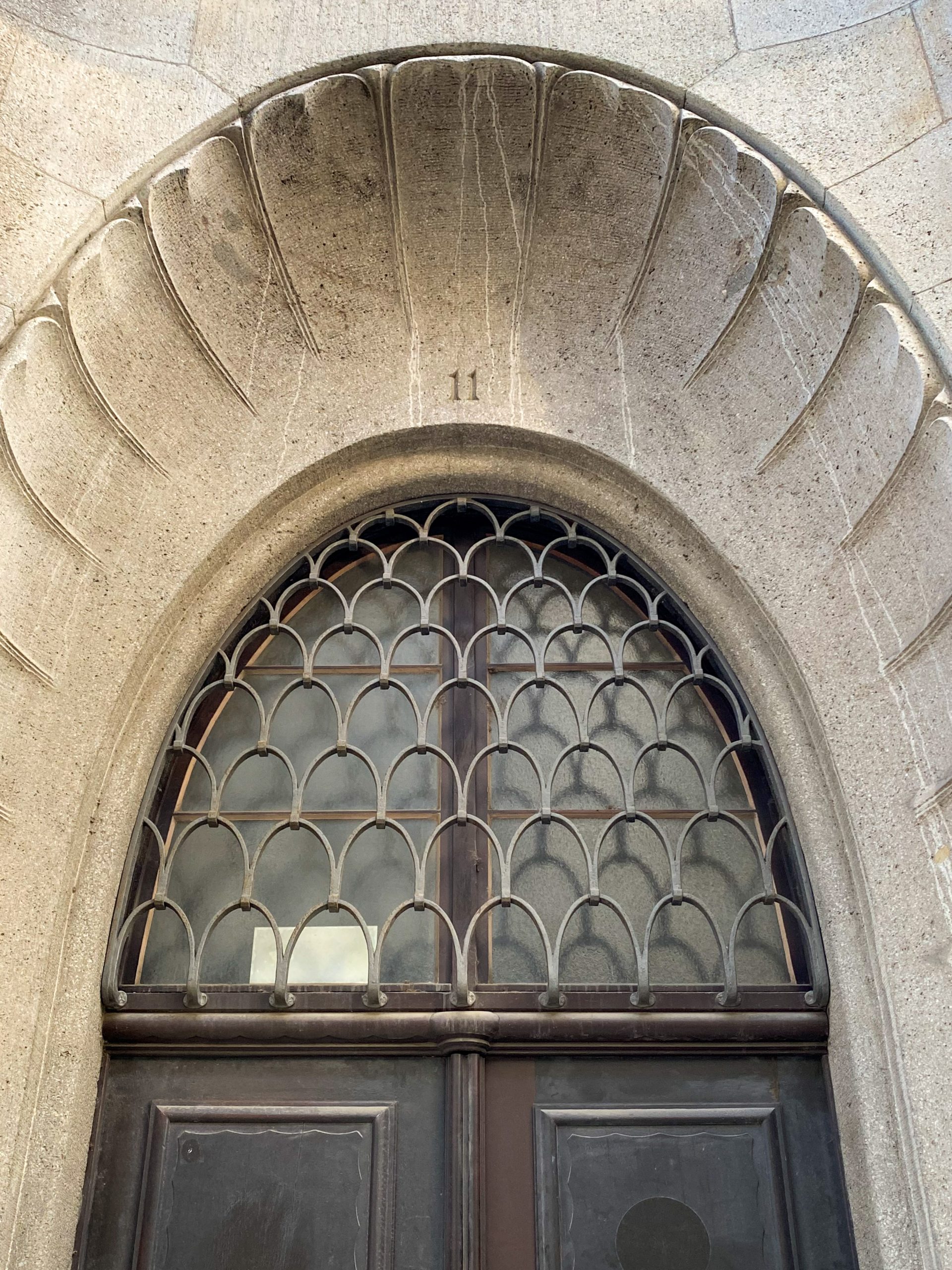
Stadthaus, 1922-1923. Architect: Ludwig Wirth. Photo: Daniela Christmann
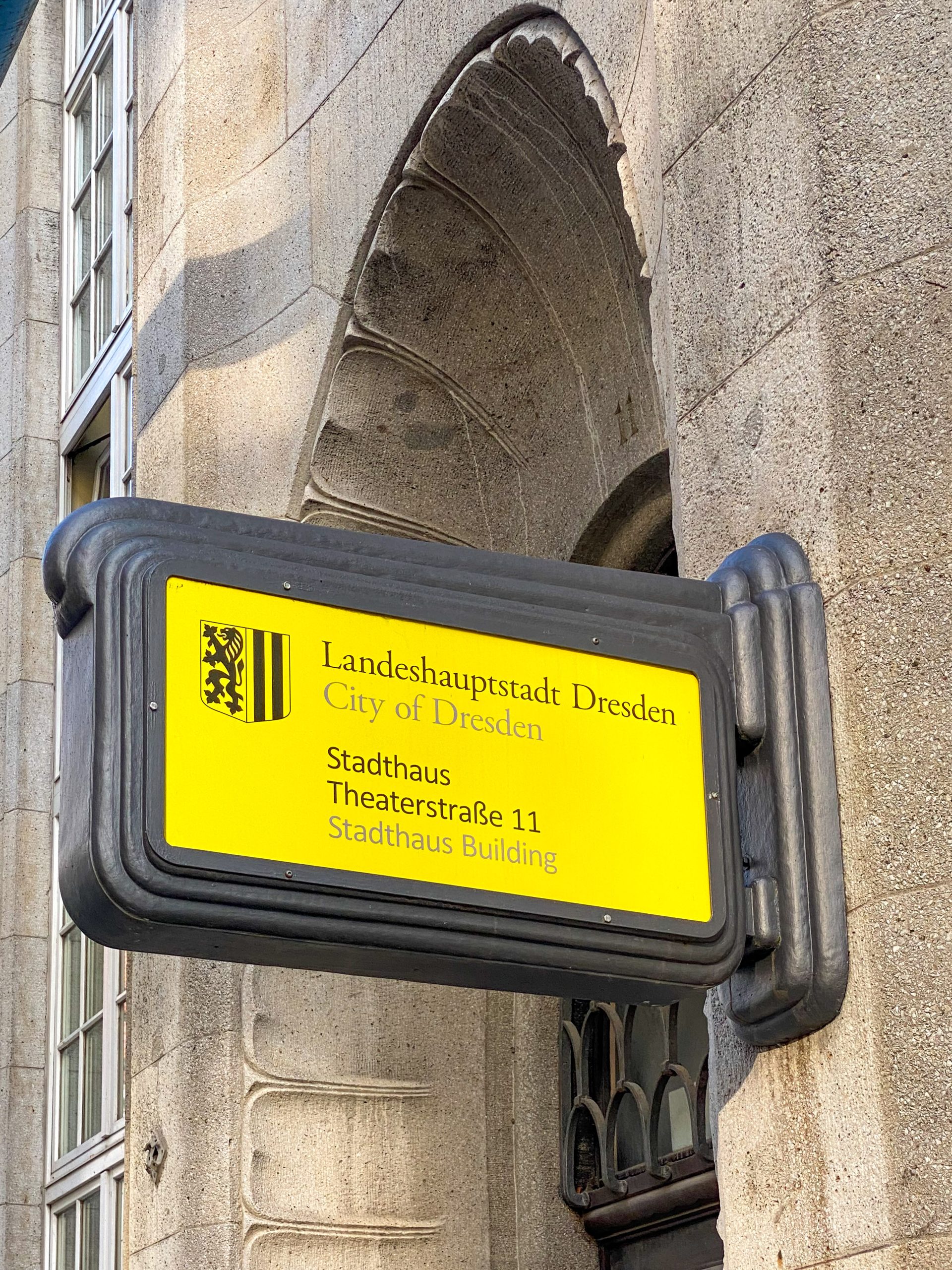
Stadthaus, 1922-1923. Architect: Ludwig Wirth. Photo: Daniela Christmann

